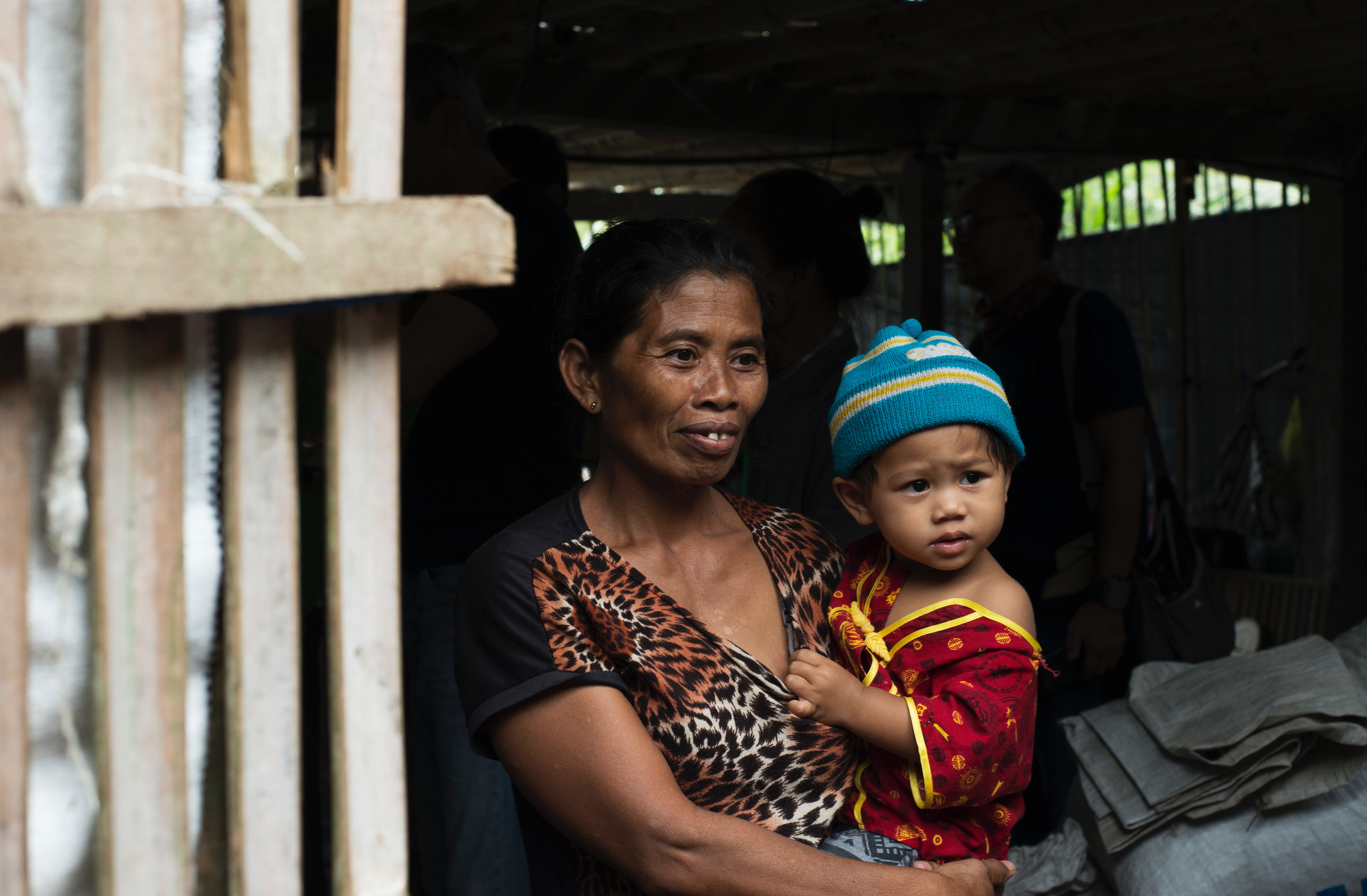Why climate change is a feminist issue

A 2015 report by Georgetown University stated: “Climate change is a global challenge that burdens all of humanity, but not equally.”
Meg McGrath, a Communications Coordinator for the Department for Social Responsibility and Sustainability, discusses why climate change is a feminist issue this International Women’s Day.
With International Women’s Day approaching, I thought I’d take the opportunity to discuss the lesser-known intersections between climate justice and gender equality, and why the former is essential to achieving the latter.
The facts:
- UN figures show that 80% of people displaced by climate change are women.
- Research has found that women and children are 14 times more likely to die in a disaster than men.
- A study undertaken over 20 years concluded that extreme weather events lowered the life expectancy of women more than men.
- Of the 140,000 casualties of the 1991 cyclone and flood disasters in Bangladesh, 90% were women.
- During the 2003 European heatwave, more women died than men.
This disparity in the impacts of climate change based on gender are starker when taking into consideration the fact that women, on average, contribute significantly less pollution than their male counterparts and are generally more concerned about the issue. Women typically travel less, consume less meat and generally leave a smaller ecological footprint in their communities. Men in the global north are those whose behaviours are most polluting, with women in the global south are those who will face the worst consequences of climate change, despite contributing the least.
Why does this link exist?
Poverty
One of the primary factors causing women to be more severely impacted by our changing climate is the reality of women being far more likely to be in poverty than men are. An estimated 70% of the 1.3 billion people in poverty in the “developing world” are women.
Poverty also means a reduced amount of resource available to spend on escape, mitigation or survival, a topic that has been discussed nationally recently after controversy relating to the Kardashian family hired private Firefighters to protect their £46 million mansions from the deadliest wildfires in California’s history, which left 86 dead.
After Hurricane Katrina in 2005, an estimated two-thirds of resulting jobs lost were by women. This is due to the jobs in the area after the disaster being in the construction industry, a typically male-dominated field.
This general reduction in socio-economic power means women have less ability to recover from extreme weather events that affect the economy, jobs or housing.
Caregiver and provider roles
Due to women being more likely to have the roles of primary caregivers and have the responsibility for providing food and fuel for a family; they are far more vulnerable when flooding or drought occur.
Women are said to plant, procure and prepare the majority of the world’s food, 75% of household food production in Sub-Saharan Africa, 65% in Asia and 45% in Latin America.
90% of Lake Chad has disappeared, a water source millions of indigenous people from Nigeria, Chad and Niger rely upon with Nigerian women already expending an estimated 85% of their daily energy intake fetching water. Central African women are already walking huge distances to reach water sources, distances that are only increasing as the effects of climate change worsen. This can result in girls having to prioritise finding water for their family over schooling, causing lower attendance and a premature potential end to their education long-term.
These longer distances leave women more prone to accidents or violence. Women experience significantly higher rates of sexual abuse in the aftermath of a natural disaster. Near-by emergency services are more likely to be busy with relief efforts or unable to access the area due to flooding or road blockages, meaning the perpetrators are also less likely to be apprehended. This risk of sexual violence results in some women not seeking aid from shelters, reducing life expectancy.
Health
Extreme weather events often result in conditions that are conducive to outbreaks of infectious disease. Large amounts of rainfall can cause contamination of water sources and create insect breeding grounds. Drought can cause fires among dry crops and cause fungal spores.
Nutrition has been proven to predetermine the capacity to respond to climate disasters. Women are more likely to give up their portion of food to prioritise their relatives, increasing the likelihood of malnutrition and resulting health issues.
Women are also more likely to suffer from malnutrition, as they often have increased nutritional needs when pregnant or breastfeeding, which is harmful to both their and their children’s health. Pregnant women, in particular, are at risk of water-borne diseases and ill-health as the result of extreme weather events.
Women are also more likely to prioritise the safety of their children or elderly relatives and thus sacrifice their own chances of survival. These factors all contribute to higher mortality rates during and after extreme weather events.
Cultural limitations
In some cultures, women are forbidden to leave the house without a male companion. This can result in women not fleeing from natural disasters in time and subsequently losing their lives. Personal accounts from Aceh, Indonesia describe women putting on the required long clothing before fleeing their homes after the first wave hit, meaning valuable time was wasted and their mobility was reduced compared to their male counterparts’ when escaping.
Men are also more likely to be taught how to swim. In the cases of tsunamis and flooding, this means women have a vast disadvantage in survival rates. In the tsunami that hit Sri Lanka in December 2004, significantly more women died than men, which was attributed to social prejudice causing women not being able to swim or climb trees.
Intersections with other factors
During Hurricane Katrina, the largest demographic trapped in New Orleans were Afro-American women with their children, the poorest group in that part of the United States. Those able to afford homes in flood-protected areas were subsequently less-severely hit by Katrina and had more resource to fund escaping to safety. Those only able to afford housing in the more ‘at risk’ locations were predominantly people of colour.
In a televised address discussing Hurricane Katrina, President George W. Bush admitted that “deep, persistent poverty” in the New Orleans area “has roots in a history of racial discrimination, which cut off generations from the opportunity of America”.
Due to many contributing factors, race continues to influence a person’s class, which thus influences a person’s ability to survive or respond to climate disasters. When discussing issues around gender, it is vital that other socio-economic factors that exacerbate gendered issues are also taken into consideration; such as those experienced by as women of colour, disabled women and LGBT+ women. Learn more here.
Exclusion in leadership positions
The gendered nature of climate change is also a result of women often not being involved in the leadership decisions, meaning funding and resources are not directed to solving issues that women face, as those making decisions are often not even aware they exist.
In a study of 130 countries, it was found that when women are in government positions, they’re more likely to sign on to international treaties that are taking action against climate change.
The UN has highlighted the need for gender-sensitive responses to the impacts of climate change, yet the average representation of women in national and global climate negotiating bodies is below 30%. In the European Union, it’s estimated women only hold a quarter of climate-related decision making posts.
However, the mere inclusion of women at this level does not mean that women’s experiences and leadership will be embedded in climate policy. Women must also lead at a national and municipal level to bring about the changes necessary.
“Women are not only victims. As they often farm the land, manage water supplies and energy use they can, when empowered be effective actors of change in developing mitigation and adaptation strategies within their communities.”
The solutions
The intersection between climate change and gender is gaining recognition.
There is still a huge way to go before we achieve gender equality worldwide. The UN Sustainable Development Goals focus upon the gendered issues and acknowledge its importance in the fight for a sustainable future. The 2015 Paris Agreement specifically focused upon the empowerment of women. In 2009, the United States’ House of Representatives issued a declaration that recognised the disproportionate impacts of climate change on women and the efforts of women globally to address climate change.
Gendered issues in the effects of climate change have still not adequately been embedded into policy, with focus continuing to be on mitigation over community adaptation strategies, vital to addressing the issue. Limiting further greenhouse gas emissions is paramount, but this must be paired with protecting and enabling recovery those in communities vulnerable to climate change.
In December 2007, four women’s organisations collaborated with women environment ministers and leaders on the UN Climate Change Conference in Bali to ensure that gender issues were prioritised in climate policy and action. As a result of this, the Network called upon UN signatories countries and the Secretariat of the UN Framework Convention to meet the following:
- Ensure UNFCC compliance on human rights frameworks, international and national commitments on gender equality and equity as well as the Convention on the Elimination of All Forms of Discriminations Against Women.
- Analyse and recognise gender-specific impacts of climate change and develop necessary adaptation methods for droughts, floods, diseases and other climate disasters
- Women often work outside formal markets and official societal structures, meaning specific methods of funding and aid need to be produced and implemented.
- Develop a specific gender and climate change strategy after extensive research on the topic
- Recognise that women have roles as powerful agents of change and their participation in decision making about the environment is crucial
Addressing these issues require long term strategies and commitment from communities, organisations and governments across the globe. Without diverting resource to groups dealing with these inequalities, mitigating the gendered impacts of climate change will be fruitless. These organisations are often underfunded and overstretched, and cannot be expected to pick up the slack for finding solutions to these complex issues.
Anthropogenic climate change is both a social justice issue and a feminist issue. Women’s empowerment worldwide needs to coincide with a dramatic global shift to prevent further climate change and ultimate climate disaster. This International Women’s Day (and every day), do what you can to create sustainable change in your community and in your own lives. All of us have the ability to make a difference, and this is a must for those committed to the betterment of women’s rights.
Climate change only drives the colossal gap between the world’s rich and poor further. With those in the global south losing livelihoods and lives as a result, we cannot wait to take action.
Want to know more?
- Read the UN factsheet, ‘Women, Gender Equality and Climate Change’





Recent comments